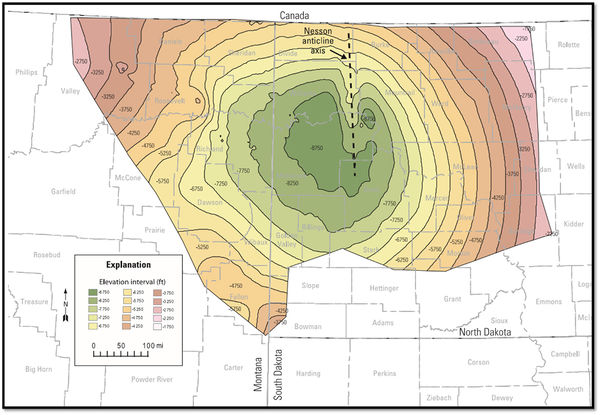The Williston Basin stands out as one of the most structurally straightforward basins globally, renowned for hosting the Bakken Shale, one of the most significant oil discoveries of recent times. Its topography resembles a saucer or bowl, with the deepest point near Williston, ND, gradually tapering towards its periphery. The Phanerozoic rocks within the basin reach a maximum thickness of 16,000 feet, with this depth commonly referred to as the Precambrian surface, although exploration beneath this layer remains limited due to the absence of outcropping Precambrian rocks, leaving the basin’s origins somewhat enigmatic.
However, recent years have witnessed a transformation in our understanding of the basin, catalyzed by the Bakken oil boom. Initially identified over five decades ago on Henry Bakken’s property, initial drilling activities yielded little success until the advent of horizontal drilling in the early 1990s sparked a brief surge in activity. Yet, it wasn’t until 2001 when a fruitful collaboration between Richard Findley, Lyco Energy, and Halliburton resulted in the discovery of a prosperous well in the Elm Coulee Field of Richland County, MT. This success paved the way for further developments, culminating in EOG’s discovery of the Parshall Field in 2006, igniting a flurry of activity across North Dakota and beyond.
The Bakken Shale, originating from the Late Devonian to Early Mississippian age, is estimated to hold a substantial reserve of recoverable oil, with estimates as high as 24 billion barrels. This formation spans across parts of Montana, North Dakota, Saskatchewan, and Manitoba, comprising three distinct layers: an upper black shale layer, a middle silty-dolomite layer, and a lower black shale layer. These shale layers serve as both petroleum source rocks and seals for oil reservoirs within the dolomite layer and the underlying Three Forks or Sanish formations. Notably, the Three Forks Formation, sourced by the Bakken, has proven to be highly prolific in certain areas, surpassing even the Bakken in productivity near the Nesson Anticline.
In addition to the Bakken and Three Forks formations, other notable plays within the Williston Basin include the Madison, Duperow, Red River, Tyler, and Spearfish formations. With ongoing seismic studies and well explorations, operators are increasingly equipped to tap into the potential of these legacy conventional plays. Whiting Petroleum, for instance, commenced targeting the Red River play in select areas in 2012, showcasing the continued evolution and diversification of exploration efforts within the basin.
